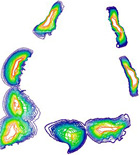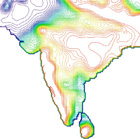 |

|
| Wessman Home | People | Projects | Contact |
| RESEARCH GROUPS @ CIRES > |
|
AMEF Project: |
Architecture for Modeling Ecological FunctionsA project of the Pacific Region Integrated Data Enterprise, (PRIDE) (1)John Kineman, (2)Rozita Abdul-Williams, and (3)Derek Masaki (1, 2) University of Colorado, Cooperative Institute for Research in the Environmental Sciences (2) Michigan State University (3) University of Hawaii and Pacific Basin Information Node 2005/2006 Demonstration Project Delineating Areas of Vulnerability to Algal Invasion in Hawaii using a Niche Model...building a "Biodiversity Information Modeling Architecture" and bridging together capabilities for mapping ecosystem functions and services. The Pride Model development pilot project is a "proof of concept" demonstration to map an invasive macro-algae problem in Maui and Oahu. The key to the modeling approach is that it is generic and scalable between different kinds of problems, so one basic parametric approach can be used generically, throughout the system, building on that to add various behaviors that a given problem requires. The fundamental structure of this newly proposed architecture, is the state-function relationship. By segregating observable states, like temperature, landcover, rainfall, human occupation, soil properties, etc, from ecological functions, such as species suitabilities, water cleansing and nutrient recycling, primary production, food production, recreation, and other "services" that ecosystems provide, it is possible to provide scientists and policy advisors with the basic tools for exploring complex ecosystem relationships. This fundamental architecture will be designed to facilitate better communication within, and consequently outside, the informatics system, for sceince, management, and policy. Project Purposes The purposes of this project include:
The specific objectives of the FY05 and FY06 (proposed) efforts are:
Project Deliverables
Niche Modeling
See Also "Integrating Distributed Sites of Ecological Vulnerability and Delineating Areas of Interest (AOI): Pacific Region Integrated Data Enterprise, PRIDE (PDF) |



